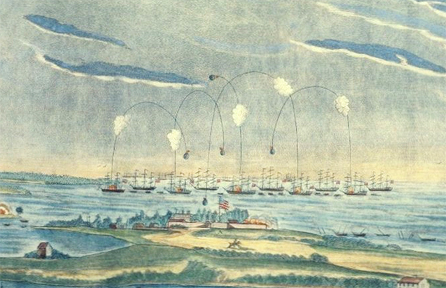 I love a good fireworks show on the Fourth of July. There is
something that makes me feel good about spreading a blanket on a grassy area
with the people of my community gathered around, marveling at the brilliant
color, shapes and the booming sound of the overhead pyrotechnics. I have seen
many fireworks displays in my lifetime. The best are always on the Fourth of
July. Beyond the awe inspiring show of lights, let me give you a good reason to
attend a fireworks display on July 4 this year.
I love a good fireworks show on the Fourth of July. There is
something that makes me feel good about spreading a blanket on a grassy area
with the people of my community gathered around, marveling at the brilliant
color, shapes and the booming sound of the overhead pyrotechnics. I have seen
many fireworks displays in my lifetime. The best are always on the Fourth of
July. Beyond the awe inspiring show of lights, let me give you a good reason to
attend a fireworks display on July 4 this year.
You may know that the fireworks we use to celebrate
Independence Day are tied to the lyrics to our National Anthem: "…the rockets
red glare, the bombs bursting in air, gave proof through the night, that our
flag was still there.” Most people believe that the song was written to
commemorate the founding of our nation on July 4, 1776. Actually, the lyrics to
the Star Spangled Banner come from a poem written by a lawyer, Francis Scott
Key, 38 years after the birth of our nation. Key was born in 1779, four years
after the American Revolutionary War began and four years before it ended. He was too young to remember it.
The Patriots of the Revolution were of his parents’ generation. As the young
nation entered its second generation, another war with Britain threatened
American sovereignty and tested its resolve to remain free – the War of 1812.
During this war, Washington D.C. was attacked and the White House was set on
fire. President James Madison had to flee the advancing British troops. (You
may know that his wife, Dolly Madison, cut a Gilbert Stuart painted portrait of
George Washington from its frame to save it from the flames.) It was during
this war that the American will to stay a free nation was tested. Enter Francis
Scott Key.
Key was a lawyer who had been employed by the United States
to negotiate a prisoner exchange with the British. On September 13, 1814, Key
and Colonel John
Stuart Skinner sailed a small boat to a British prison ship
anchored in Chesapeake Bay. After making their negotiations, they were
detained. While on the ship, they had learned of the British intention to
attack Baltimore and the Brits were not about to let them return to the city
and announce the attack. Between the city and the British war fleet was Fort
McHenry: a five-pointed-star-shaped fortress built on a point at the entrance
to the Baltimore Harbor. If the British were to take the city by sea, they
would have to disarm or destroy Fort McHenry. For 25 hours September 13-14, the
British Navy fired upon the fort. Key and Skinner could only watch as the
mortar and rocket fire continued through the night. They could only guess that
since the bombardment continued, that the American fort had not fallen. It was
not until morning light that they knew for sure.
The commander of Fort McHenry, Major George Armistead, had
requisitioned a Baltimore seamstress, Mary Pickersgill, to make a flag so large
that the British could see it from miles away. The oversized flag had been
flying over the fort when the fight began. As the sun rose over the waters, Key
could see the torn and tattered flag still flying over the fort. Despite the
continual barrage, that flag flying above the fort became a symbol of the resolve of the troops in Fort
McHenry not to give in.
Key was greatly impressed by the symbolism of that flag.
This was not their parent’s war. This was the war of his generation. Would they
stand up and be counted? On that morning, when the light revealed the flag over
McHenry, Key knew they would. When the British had run out of ammunition, they
gave up the fight. Key, Skinner and the prisoner that was released were freed
to return to shore. On the way, Key penned a poem that he named The Defence
of Fort McHenry. The
name was later changed to the Star Spangled Banner. If you go to the
Smithsonian in Washington D.C., make sure you go see the flag that inspired the writing of the National Anthem.
Why should you go to the fireworks on July 4? To celebrate
what comes the next day – your freedom is still intact. You live in a great
country. It may be tested again in our lifetime. Will we have the resolve to
fight for freedom? The fireworks are a reminder of the hard times; the challenging times that require us to put action to our beliefs. The flag is
a symbol of perseverance through those hard times. I tend to believe we will
keep the flag flying. Have a good Independence Day.